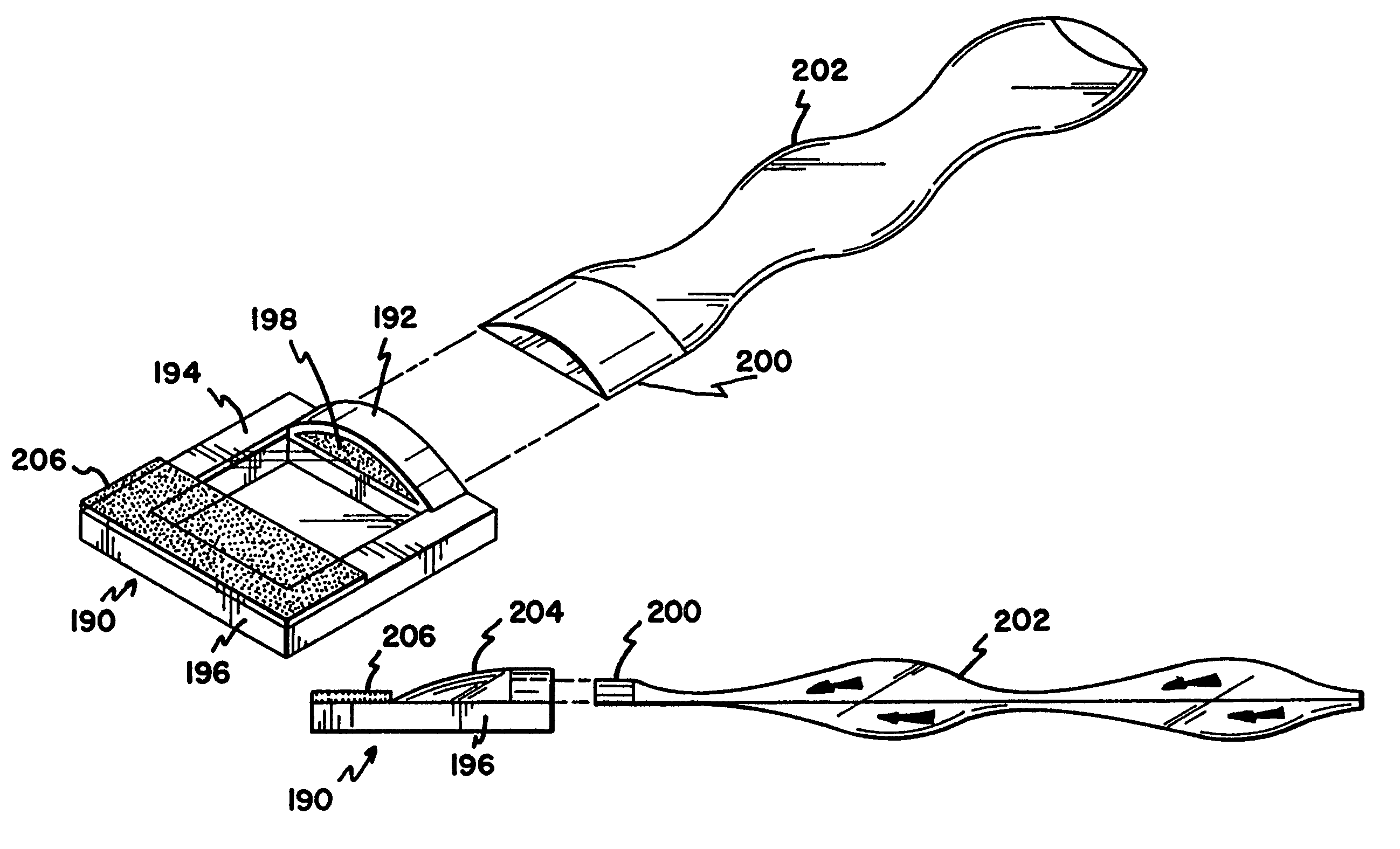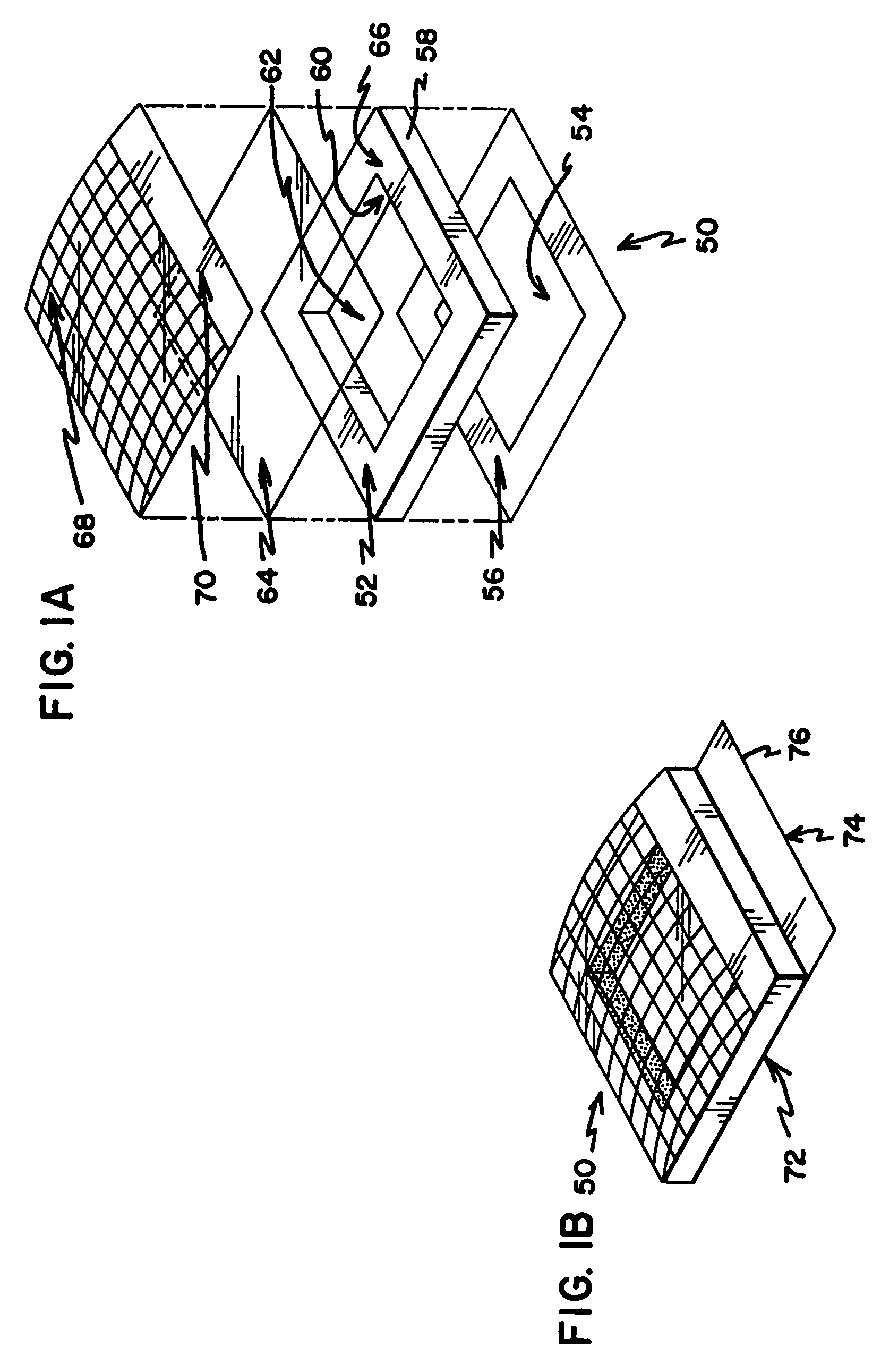Wound covering
a wound and cover technology, applied in the field of wound cover, can solve the problems of difficult to achieve heat therapy for wound treatment and infection in practice, interfere with the healing process, etc., and achieve the effect of promoting wound healing
- Summary
- Abstract
- Description
- Claims
- Application Information
AI Technical Summary
Benefits of technology
Problems solved by technology
Method used
Image
Examples
Embodiment Construction
[0041]The present invention is directed to a non-contact wound covering for controlling the local environment at a wound site on a patient. The wound covering protects the wound from contamination by materials from the outside environment and also prevents the wound site from shedding contaminants into the local environment of the patient, i.e. the hospital room. The treatment volume formed over the wound site can be controlled to create an optimal healing environment. The word “wound” as used herein refers generically to surgical incisions, ulcers, or other lesions or breaks in the skin.
[0042]Each embodiment of the wound covering includes three basic elements. First a vertical wall is provided to encircle the wound area on the surface of the patient's skin. This vertical structure is self supporting and provides an upper surface to support a barrier layer above the level of the wound. This structure is referred to throughout as the peripheral sealing ring. The next element is a bar...
PUM
 Login to View More
Login to View More Abstract
Description
Claims
Application Information
 Login to View More
Login to View More - R&D
- Intellectual Property
- Life Sciences
- Materials
- Tech Scout
- Unparalleled Data Quality
- Higher Quality Content
- 60% Fewer Hallucinations
Browse by: Latest US Patents, China's latest patents, Technical Efficacy Thesaurus, Application Domain, Technology Topic, Popular Technical Reports.
© 2025 PatSnap. All rights reserved.Legal|Privacy policy|Modern Slavery Act Transparency Statement|Sitemap|About US| Contact US: help@patsnap.com



